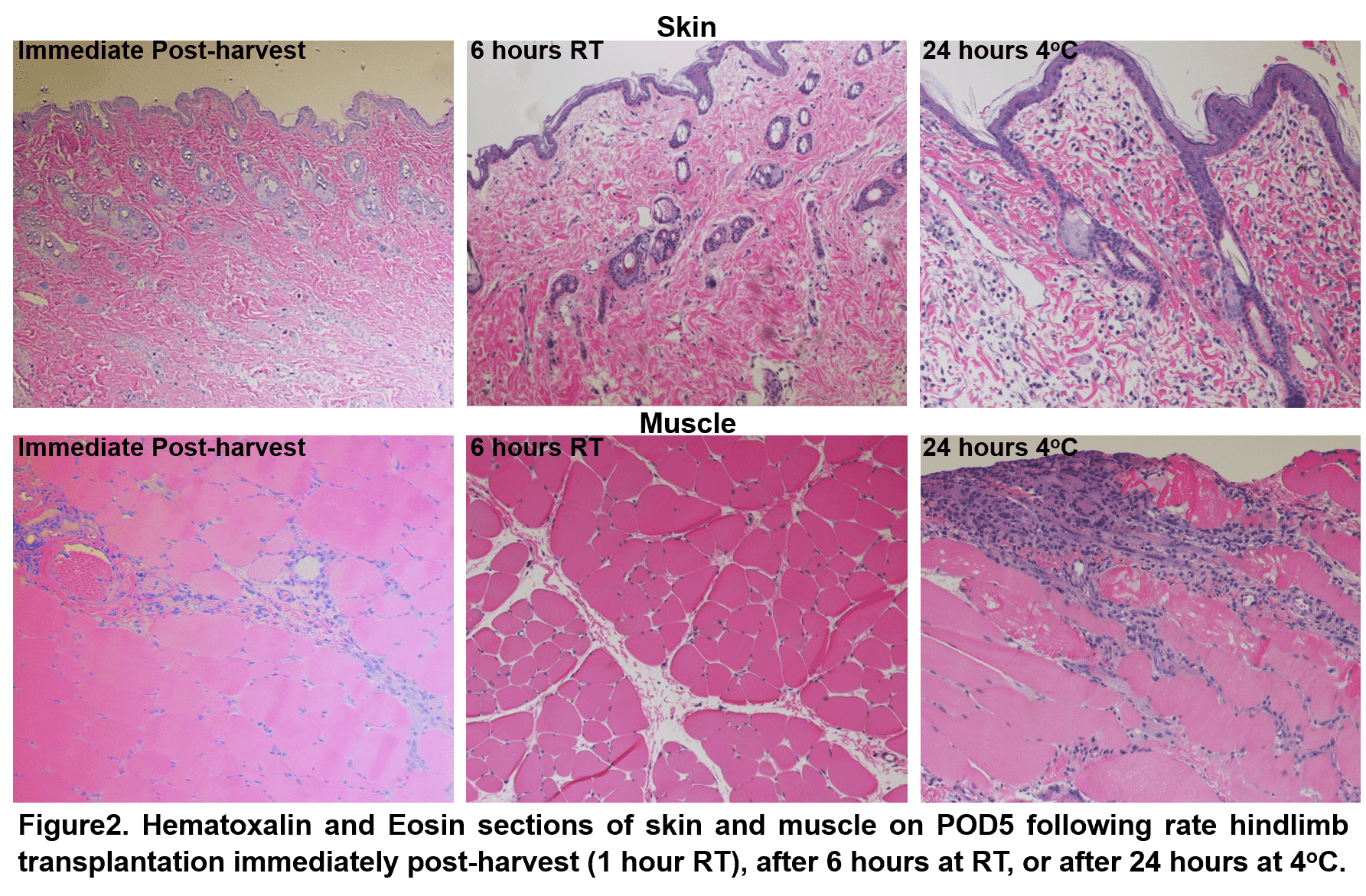Rat Hind Limb Transplant Model to Assess Vascularized Composite Allograft (VCA) Inflammation and Ischemia Reperfusion Injury
1Surgery, University of Colorado Anschutz Medical Campus, Aurora, CO, 2Pathology, University of Michigan, Ann Arbor, MI
Meeting: 2020 American Transplant Congress
Abstract number: B-342
Keywords: Inflammation, Ischemia, Rat
Session Information
Session Name: Poster Session B: Ischemia Reperfusion & Organ Rehabilitation
Session Type: Poster Session
Date: Saturday, May 30, 2020
Session Time: 3:15pm-4:00pm
 Presentation Time: 3:30pm-4:00pm
Presentation Time: 3:30pm-4:00pm
Location: Virtual
*Purpose: Vascularized composite allografts are potential surgical solutions for patients with traumatic or disfiguring injuries but are highly immunogenic and require elevated levels of immunosuppression. Because of their significant muscle components, VCAs are vulnerable to ischemia reperfusion injury (IRI), an inflammatory process that may predispose to rejection. Reducing IRI may improve graft function and reduce the risk of chronic rejection. We developed a syngeneic rat hind limb transplant model to test approaches for reducing IRI-related inflammation after VCA transplantation.
*Methods: The right hind limb of the Brown Norway (BN) donor is removed, the femoral artery is cannulated and flushed with heparinized lactated ringers, and the limb is wrapped in wet gauze and either immediately transplanted (~1hr ischemia) or maintained at room temperature (RT) for 6 hours or at 4℃ for 24 hours prior to syngeneic orthotopic transplantation. Skin and muscle were obtained pre-implantation and at post-operative day (POD)5 and examined using TUNEL and H&E stains to quantify the extent of injury and inflammation.
*Results: All animals showed histologic changes by POD5. In donor limbs transplanted immediately, skin and muscle showed minimal inflammatory infiltrates. In donor limbs exposed to 6 or 24 hours of ischemia, there was dermal and endomyosial inflammation with dermal edema and myocyte necrosis on POD5. Postperfusion TUNEL staining revealed focal apoptosis in all limbs transplanted following 6 or 24 hours of ischemia.
*Conclusions: Using a syngeneic BN rat model of hind limb transplantation we have established a reliable platform to study VCA IRI and evaluate preventative strategies. In this model, 1 hour RT ischemia which occurs during the hind limb transplantation procedure itself results in minimal inflammation at POD5, whereas 24 hours cold ischemia consistently yields extensive inflammation throughout the dermis and endomysium on POD5. Further directions include evaluating perfusion approaches to prevent ischemic injury and assessing methods of preventing inflammatory response to ischemic injury.
To cite this abstract in AMA style:
Wang Z, Harrant AB, Wang Y, Washington K, Farkash E, Huang CA. Rat Hind Limb Transplant Model to Assess Vascularized Composite Allograft (VCA) Inflammation and Ischemia Reperfusion Injury [abstract]. Am J Transplant. 2020; 20 (suppl 3). https://atcmeetingabstracts.com/abstract/rat-hind-limb-transplant-model-to-assess-vascularized-composite-allograft-vca-inflammation-and-ischemia-reperfusion-injury/. Accessed December 14, 2025.« Back to 2020 American Transplant Congress


